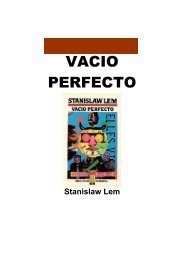cambridge-crime-fiction
cambridge-crime-fiction
cambridge-crime-fiction
You also want an ePaper? Increase the reach of your titles
YUMPU automatically turns print PDFs into web optimized ePapers that Google loves.
stephen knight<br />
‘a code of fair play to the reader’, 13 gave a full account of possible classical<br />
sources and more probable nineteenth-century ones, recognised Christie as<br />
a major figure and disliked psychological sympathy for the criminal. 14 This<br />
recognition of the clue-puzzle was shared by Willard Huntington Wright, the<br />
real name of S. S. Van Dine, who wrote an introduction to a Scribner’s anthology<br />
in 1927, the year after his The Benson Murder Case appeared with<br />
great success. He emphasised ‘the category of riddles’ 15 and frowned on<br />
anything which detracted from the puzzle; he criticised Christie for being artificial<br />
(which comes oddly from him) and gave a list of clichés much like that<br />
found in Wells. The best-known of these critiques was Dorothy L. Sayers’s<br />
1928 anthology introduction: she fully recognised the clue-puzzle and gave it<br />
the now familiar ancient genealogy, but also set out a programme for ‘a new<br />
and less rigid formula ...linking it more closely to the novel of manners’. 16<br />
While her own practice would later pursue this aim, the pure clue-puzzle<br />
was at the time widely recognised and codified: both Van Dine and Ronald<br />
Knox (himself the author of some intelligent and entertaining puzzles) produced<br />
lists of rules and Knox’s formed the basis for the oath of the Detection<br />
Club that he set up with Sayers, Chesterton, E. C. Bentley and A. B. Cox<br />
among others. Van Dine’s list, 17 which was published first, emphasises clarity<br />
and unity of technique, as well as fair play, matters which Knox repeats<br />
in condensed form, 18 adding advice against plagiarism: individual rights and<br />
duties are always central to the form.<br />
In a short period, the clue-puzzle had emerged as a dominant form, a fact<br />
charted by A. E. W. Mason’s two most successful mysteries. At the Villa Rose<br />
(1910) has a clever, vain detective, Inspecteur Hanaud, and he solves a murder<br />
in a large house. But the murder is done by a gang assisted by a servant, with<br />
few clues and no other suspects, and the mystery is resolved two-thirds of the<br />
way through: the rest is explanation. In 1924 Mason produced The House of<br />
the Arrow with the same detective and a similar setting, but this time there<br />
are multiple suspects, many fair clues (not quite all of them though), an<br />
investigation leading to a dramatically revealing climax, and the illusions –<br />
a pen doubling as a poisoned arrow, a clock seen in a mirror – beloved of<br />
the clue-puzzle form.<br />
The triumph of the form is so clear and sudden that some contextual forces<br />
must be suspected as causing this remarkable development. One cause was<br />
that these books were novels. The basic late nineteenth-century mystery was<br />
the short story, with a single puzzling event and a single villain, deftly exposed<br />
by a detective who reveals few clues before the end. Mystery might well play<br />
a role in the longer form of the three-decker novel but only rarely was it<br />
elaborated to the length required and then the method was usually a slow<br />
development of a single enigma with elaborate setting and characterisation,<br />
80



